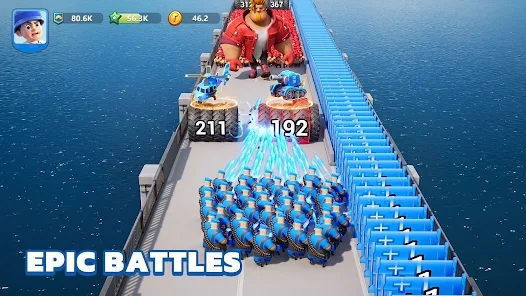Unlocking Learning Fun: How Casual Games Are Revolutionizing Educational Games for All Ages
When we think of education, the whimsical world of casual games might not be the first thing that comes to mind. But did you know that these games are making learning more engaging than ever before? No longer are educational games cloaked in boring aesthetics and dull mechanics; they’re now vibrant, fun, and even competitive. Let’s dive into how casual games are shaking up the educational sector, providing not just learning but also a good dose of fun for learners of all ages!
The Rise of Casual Games in Education
Casual games have taken the world by storm—thanks to their approachable nature and simple mechanics. From puzzle games to interactive story-driven adventures, these games are not only entertaining but also surprisingly educational. How did we get here?
From Boredom to Engagement
Remember the days of dull math drills? With the advent of casual games, we can say goodbye to rote memorization. Games are designed to captivate the learner’s attention, making even complex subjects seem more palatable.
The Power of Rewards and Achievements
The concept of reward systems is prevalent in both casual and educational games. As players complete levels or answer questions correctly, they receive rewards, whether it's points, badges, or even virtual prizes. This not only fosters a sense of achievement but also motivates players to continue learning.
Making Learning Collaborative
Have you ever played a game where teamwork was essential to success? Multiplayer casual games encourage collaboration, urging players to work together to achieve common educational goals. This social component transforms solo study sessions into group endeavors.
Boxing Match: Games vs. Traditional Methods
If traditional education is a heavyweight champion, casual games are the nimble underdog, darting around and landing jabs where the conventional methods can’t reach. The contrast is striking:
| Aspect | Traditional Education | Casual Games |
|---|---|---|
| Engagement | Low | High |
| Learning Pace | One-size-fits-all | Adaptive |
| Social Interaction | Limited | Collaborative |
How Long Has Last War Mobile Game Been Out?
This question might arise when looking into mobile games that blend strategy with education. “Last War," a tactical game, encourages critical thinking and decision-making skills, embodying the educational aspects we now crave in casual gaming.
Interactive Learning: A New Frontier
Casual games leverage interactivity—players can control their learning paths and access content that resonates with their interests. This personal touch fosters engagement, making it easier for learners to soak up information.
Incorporating Technology in Education
With years of chalkboards and textbooks, technology offers an innovative twist. Casual games seamlessly integrate technology within the learning process, demonstrating concepts in real-time and adapting to individual learning behaviors.
The Benefits of Humor in Learning
Who says learning has to be serious? Casual games often incorporate humor, making the educational experience enjoyable. Laughter enhances memory retention and fosters a positive attitude toward learning.
The Future of Casual Educational Gaming
As we glance toward the horizon, the integration of AR and VR into casual educational games seems promising. Imagine immersing yourself in a historical event or exploring a scientific phenomenon firsthand. The potential is limitless!
Challenges on the Path Ahead
While we celebrate the rise of casual games in education, there are hurdles to address. Finding the right balance between fun and educational value is key. Are all casual games genuinely educational? Not necessarily, and it’s essential to scrutinize the content.
Key Features That Make Games Educational
- Adaptive Learning: Adjusts difficulty based on the learner’s abilities.
- Feedback Mechanism: Provides immediate feedback for continuous improvement.
- Goal Orientation: Sets clear objectives for players to work towards.
- Interactivity: Involves players in their learning journey.
Concluding Thoughts: Learning Through Play
In a world where attention spans are fleeting, using casual games as educational tools opens up new possibilities. By embracing the fun aspect of games, the educational landscape shifts dramatically, catering to a generation that thrives on excitement and interactivity. If you haven’t yet explored how these innovations are transforming education, it’s time to join the revolution. After all, why can’t learning be as enjoyable as an action-packed video game?



